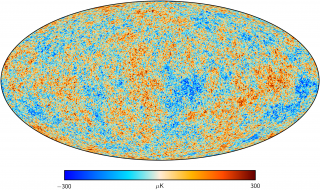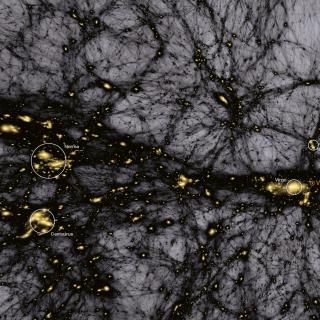Bibcode
Remazeilles, M.; Douspis, M.; Rubiño-Martín, J. A.; Banday, A. J.; Chluba, J.; de Bernardis, P.; De Petris, M.; Hernández-Monteagudo, C.; Luzzi, G.; Macias-Perez, J.; Masi, S.; Namikawa, T.; Salvati, L.; Tanimura, H.; Aizawa, K.; Anand, A.; Aumont, J.; Baccigalupi, C.; Ballardini, M.; Barreiro, R. B.; Bartolo, N.; Basak, S.; Bersanelli, M.; Blinov, D.; Bortolami, M.; Brinckmann, T.; Calabrese, E.; Campeti, P.; Carinos, E.; Carones, A.; Casas, F. J.; Cheung, K.; Clermont, L.; Columbro, F.; Coppolecchia, A.; Cuttaia, F.; de Haan, T.; de la Hoz, E.; Della Torre, S.; Diego-Palazuelos, P.; D'Alessandro, G.; Eriksen, H. K.; Finelli, F.; Fuskeland, U.; Galloni, G.; Galloway, M.; Gervasi, M.; Génova-Santos, R. T.; Ghigna, T.; Giardiello, S.; Gimeno-Amo, C.; Gjerløw, E.; González González, R.; Gruppuso, A.; Hazumi, M.; Henrot-Versillé, S.; Hergt, L. T.; Herranz, D.; Kohri, K.; Komatsu, E.; Lamagna, L.; Lattanzi, M.; Leloup, C.; Levrier, F.; Lonappan, A. I.; López-Caniego, M.; Maffei, B.; Martínez-González, E.; Matarrese, S.; Matsumura, T.; Micheli, S.; Migliaccio, M.; Monelli, M.; Montier, L.; Morgante, G.; Nagano, Y.; Nagata, R.; Novelli, A.; Omae, R.; Pagano, L.; Paoletti, D.; Pavlidou, V.; Piacentini, F.; Pinchera, M.; Polenta, G.; Porcelli, L.; Ritacco, A.; Ruiz-Granda, M.; Sakurai, Y.; Scott, D.; Shiraishi, M.; Stever, S. L.; Sullivan, R. M.; Takase, Y.; Tassis, K.; Terenzi, L.; Tomasi, M.; Tristram, M.; Vacher, L.; van Tent, B. et al.
Bibliographical reference
Journal of Cosmology and Astroparticle Physics
Advertised on:
12
2024
Citations
5
Refereed citations
5
Description
We assess the capabilities of the LiteBIRD mission to map the hot gas distribution in the Universe through the thermal Sunyaev-Zeldovich (SZ) effect. Our analysis relies on comprehensive simulations incorporating various sources of Galactic and extragalactic foreground emission, while accounting for the specific instrumental characteristics of the LiteBIRD mission, such as detector sensitivities, frequency-dependent beam convolution, inhomogeneous sky scanning, and 1/f noise. We implement a tailored component-separation pipeline to map the thermal SZ Compton y-parameter over 98% of the sky. Despite lower angular resolution for galaxy cluster science, LiteBIRD provides full-sky coverage and, compared to the Planck satellite, enhanced sensitivity, as well as more frequency bands to enable the construction of an all-sky thermal SZ y-map, with reduced foreground contamination at large and intermediate angular scales. By combining LiteBIRD and Planck channels in the component-separation pipeline, we also obtain an optimal y-map that leverages the advantages of both experiments, with the higher angular resolution of the Planck channels enabling the recovery of compact clusters beyond the LiteBIRD beam limitations, and the numerous sensitive LiteBIRD channels further mitigating foregrounds. The added value of LiteBIRD is highlighted through the examination of maps, power spectra, and one-point statistics of the various sky components. After component separation, the 1/f noise from LiteBIRD's intensity channels is effectively mitigated below the level of the thermal SZ signal at all multipoles. Cosmological constraints on S 8 = σ 8 (Ωm /0.3)0.5 obtained from the LiteBIRD-Planck combined y-map power spectrum exhibits a 15 % reduction in uncertainty compared to constraints derived from Planck alone. This improvement can be attributed to the increased portion of uncontaminated sky available in the LiteBIRD-Planck combined y-map.
Related projects

Anisotropy of the Cosmic Microwave Background
The general goal of this project is to determine and characterize the spatial and spectral variations in the temperature and polarisation of the Cosmic Microwave Background in angular scales from several arcminutes to several degrees. The primordial matter density fluctuations which originated the structure in the matter distribution of the present
Rafael
Rebolo López

Cosmology with Large Scale Structure Probes
The Cosmic Microwave Background (CMB) contains the statistical information about the early seeds of the structure formation in our Universe. Its natural counterpart in the local universe is the distribution of galaxies that arises as a result of gravitational growth of those primordial and small density fluctuations. The characterization of the
FRANCISCO SHU
KITAURA JOYANES